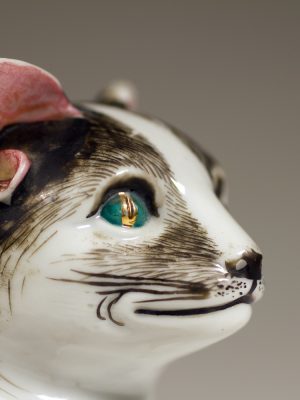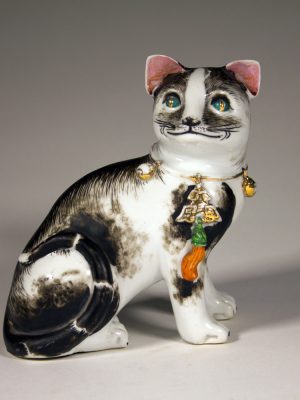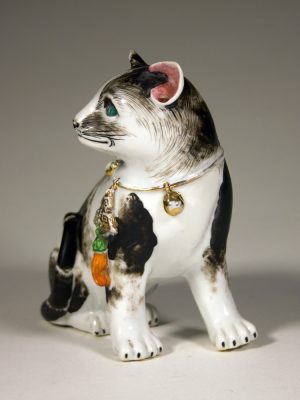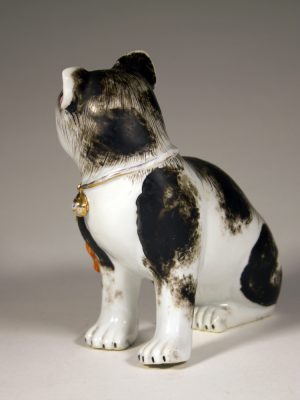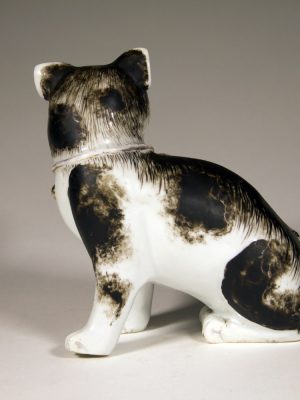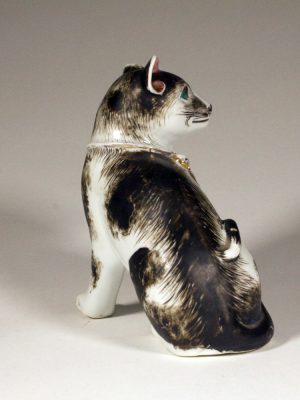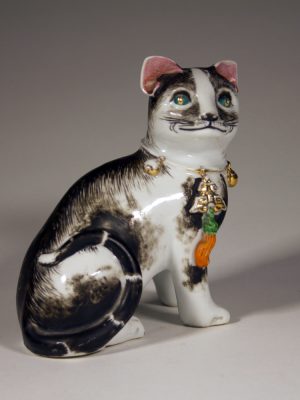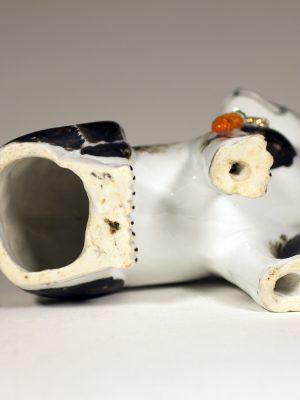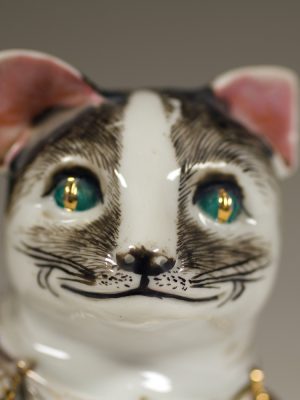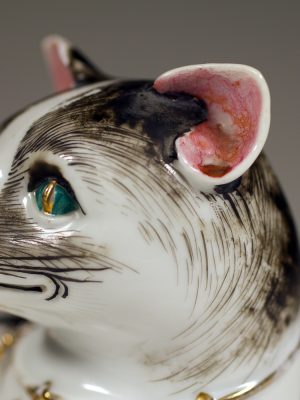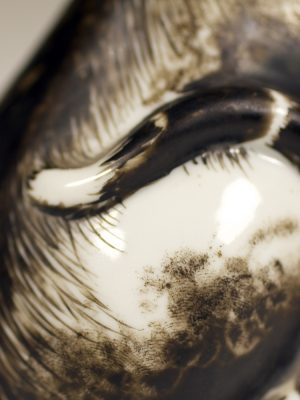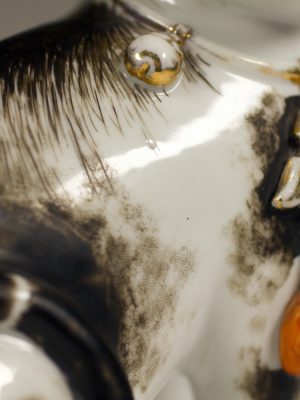Sometimes, I have a revelation about an object only when I go to document it. That is the case with this figure, an enamelled version of one of the pair of cats shown last week.
I had assumed for the last few years that while the form was eighteenth century, the enamelling was of a later date. Perhaps nineteenth century. After all, there is nothing to stop someone from taking an antique and giving it a makeover. I thought that is what I was seeing here. I realize now that I accepted this explanation rather too easily and that it was clearly wrong.
The decoration is in fact very much in keeping with enamelled animal figures from the Qianlong period (1735 to 1796). While Qianlong porcelain enamelled cats are few, many examples of pugs and hounds with similar enamel work can be found online and in books. Those examples have finely painted lines in either black or iron red to indicate fur, collars with gilded bells, details in rose and iron red, and a deep green enamel for the eyes. The simplest explanation then, and one that accords with the dating of the Blanc de Chine versions, is that this cat is Qianlong too. I can’t believe I didn’t see that before.
This example, like the two seen last week, is consistent in form with Donnelly. The consistency of the enamel painting with the Qianlong period further supports the dating of all three cats to the eighteenth century.
Donnelly gave the illustrated example in his book a date of 1700 to 1750. I would suggest a revised date for this and last week’s pair of 1735 to 1750, the period of overlap between Donnelly and the Qianlong period.
A detail I find very appealing is how the enamel painter used their finger tips to dab the patches of black enamel, their unique pattern of whorls and lines forever memorialized in the surface. It literally adds a human touch.
15.9 cm in height.

